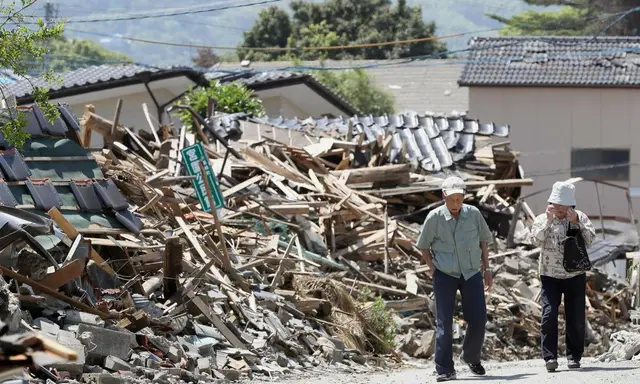Scientists studying the earthquake that struck southern Japan in April have identified a number of seismological factors that made the tremor so destructive – and warn that should the same factors combine beneath a major city it could bring down a skyscraper.
The 7.3 magnitude quake that struck beneath the city of Kumamoto on the evening of April 14 caused extensive damage, with hundreds of homes, buildings and other infrastructure collapsing from the violence of the shaking. Others were engulfed in landslides.
A total of 49 people were killed, and 100,000 people were evacuated from their homes. Many have been unable to return due to the damage or the threat posed to unstable buildings by the ongoing aftershocks.
A team at Tokyo’s Kogakuin University headed by Professor Yoshiaki Hisada has determined that a specific type of seismic movement took place in Kyushu and that the long-period ground movement was the most powerful ever observed during an inland quake caused by faults slipping.
“There are many different types of earthquake, but in the case of the Kyushu quake we have confirmed that a major fault – the Futagawa Fault – close to the surface slipped directly beneath Kumamoto City,” Hisada told The South China Morning Post.
When that was combined with long-period ground motion, “there can be severe damage, as we see in this case”, he said.
The residents of Kumamoto and surrounding districts were relatively fortunate that thereare few multi-storey structures in the city as the damage would have been far more extensive, the professor added.
Piles of rubble from collapsed houses are seen in the town of Mashiki, Kumamoto Prefecture, on May 5, 2016, in the wake of powerful earthquakes that hit southwestern Japan in mid-April. Photo: Kyodo
In a simulation involving a 29-floor building in Tokyo, for example, the structure would have been seriously shaken by the combination of factors that occurred in Kyushu.
The upper stories of the 150-metre-tall building, for example, would have oscillated by as much as 3.5 metres, the simulation suggested.
There is also a high likelihood that the building would remain on an angle after the tremors had abated, rendering it unusable.
“In a worst-case scenario, a high-rise building could come down,” he said.
The tallest structure in Japan at present is the Tokyo Skytree, which is 634 metres tall, while more than 20 office buildings are over 200 metres high.
The city was struck by a magnitude 5.6 earthquake on Monday evening, although officials say there was no damage and no injuries were reported.
Hisada said the long-period ground movement recorded in Kyushu was three times more powerful than what present legal requirement for high-rise buildings can withstand and therefore a danger that many structures will not survive such a major tremor.
With the March 2011 earthquake – which caused nearly 19,000 casualties and the meltdown of three nuclear reactors at Fukushima – still fresh in the memory, some experts have called on the government to review construction standards for major cities that are on or close to active faults.
 简体中文
简体中文





